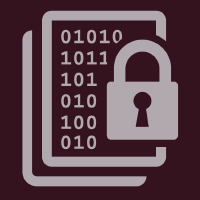Topic Menu
► Topic MenuTopic Editors

2. Research Institute of Energy Management and Planning (RIEMP), University of Tehran, Tehran 1417466191, Iran

Recent Trends in Blockchain and Its Applications
Topic Information
Dear Colleagues
Blockchain technology and its applications have significantly progressed since the introduction of Bitcoin in 2008. Today, innovators in various fields have realized the advantages of blockchain. From medicine to finance, many sectors are now looking for ways to integrate blockchain into their infrastructures and technologies. This Special Issue aims to gather high-quality scientific articles on the theoretical and practical aspects of blockchain technologies in the following areas:
- Blockchain applications (finance, medical, global warming, and climate chain, security, lending, insurance, money transfer, real estate, voting, logistics, supply chains, IoT, energy, gaming, etc.);
- Blockchain technology;
- Blockchain and AI;
- Blockchain and big data;
- Blockchain and data mining;
- Public blockchain and its applications;
- Private blockchain and its applications;
- Blockchain security and testing.
Dr. Hossein Hassani
Dr. Nadejda Komendantova
Topic Editors
Keywords
- blockchain and its application
- private blockchain
- public blockchain
- AI
- big data
- data mining
- IoT
- machine learning
- smart
- advanced technology
- intelligence
Participating Journals
| Journal Name | Impact Factor | CiteScore | Launched Year | First Decision (median) | APC |
|---|---|---|---|---|---|

Algorithms
|
1.8 | 4.1 | 2008 | 15 Days | CHF 1600 |

Applied Sciences
|
2.5 | 5.3 | 2011 | 17.8 Days | CHF 2400 |

Cryptography
|
1.8 | 3.8 | 2017 | 23.9 Days | CHF 1600 |

Future Internet
|
2.8 | 7.1 | 2009 | 13.1 Days | CHF 1600 |

Mathematics
|
2.3 | 4.0 | 2013 | 17.1 Days | CHF 2600 |

MDPI Topics is cooperating with Preprints.org and has built a direct connection between MDPI journals and Preprints.org. Authors are encouraged to enjoy the benefits by posting a preprint at Preprints.org prior to publication:
- Immediately share your ideas ahead of publication and establish your research priority;
- Protect your idea from being stolen with this time-stamped preprint article;
- Enhance the exposure and impact of your research;
- Receive feedback from your peers in advance;
- Have it indexed in Web of Science (Preprint Citation Index), Google Scholar, Crossref, SHARE, PrePubMed, Scilit and Europe PMC.

